A Week in the Bush Vol. 442
on Jan 11, 2023Welcome to the first “A Week in the Bush” for 2023! We look forward to another incredible year of sightings and if this first week is anything to go by, we’re in for something truly special...
A weekend of rain left seasonal water pans full all over the reserve. This Wahlberg's eagle took full advantage of one of these pans and had a bath.
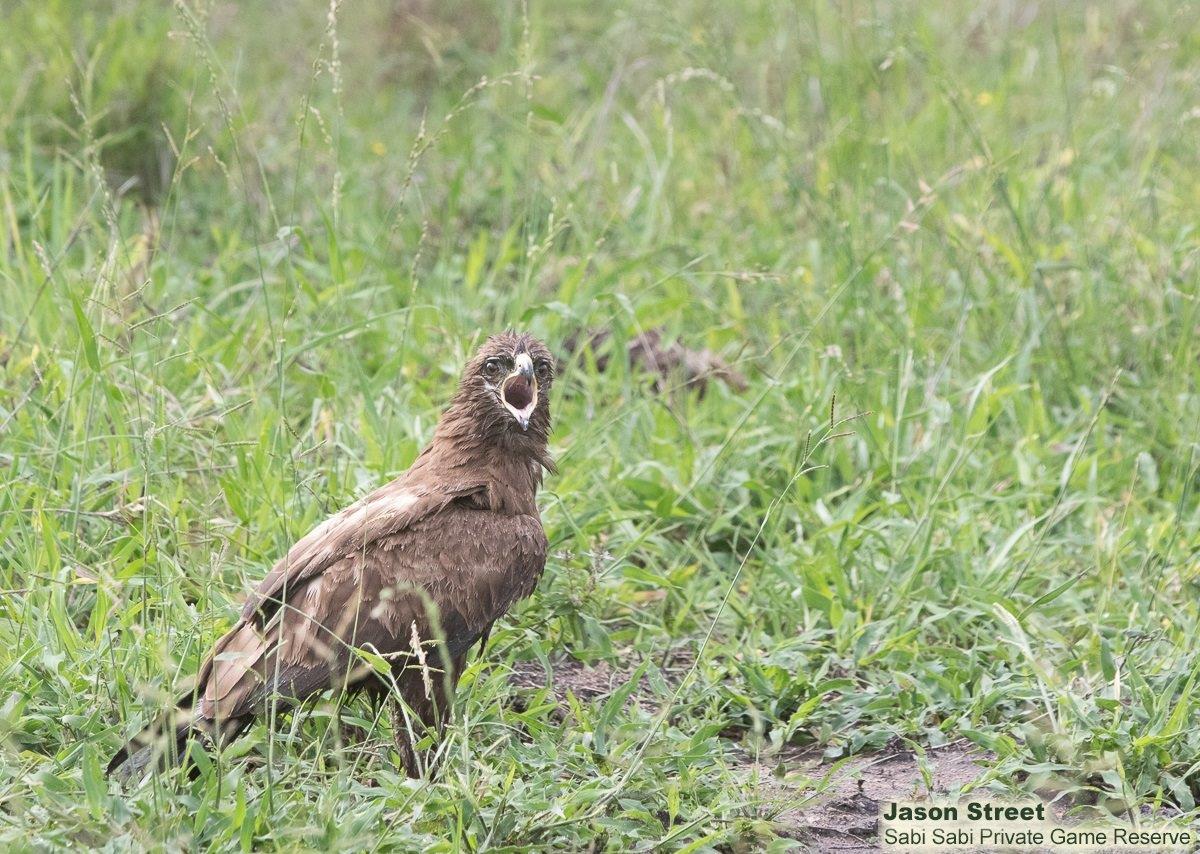
Marula season is here, and the elephants could not be happier. We found this big male elephant enjoying the Marula fruits that have dropped to the ground. Searching for the fruits by using his trunk, he will carefully pick out the fruits he wants to eat, and the ones that are not ready to eat yet.
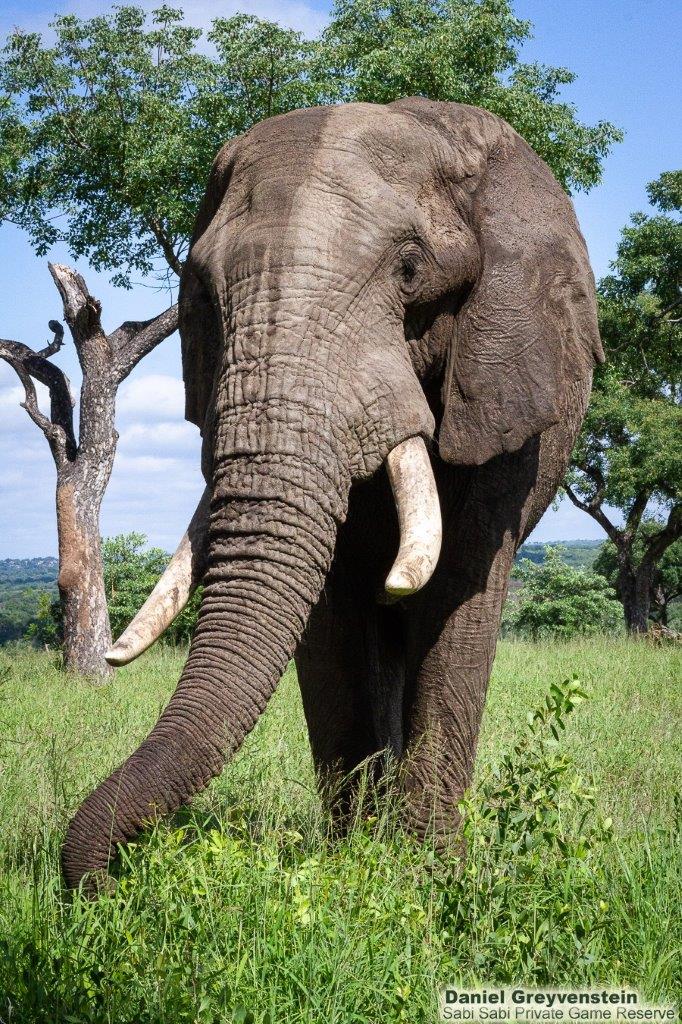
While out on game drive, we are afforded the opportunity to focus on everything the bush has to offer. Birds are one of Coenraad’s favourite species to look out for between tracking the Big 5. The colourful Lilac-breasted Roller and beautiful, but shy, Spotted eagle-owl are just two of the many species seen regularly at Sabi Sabi.
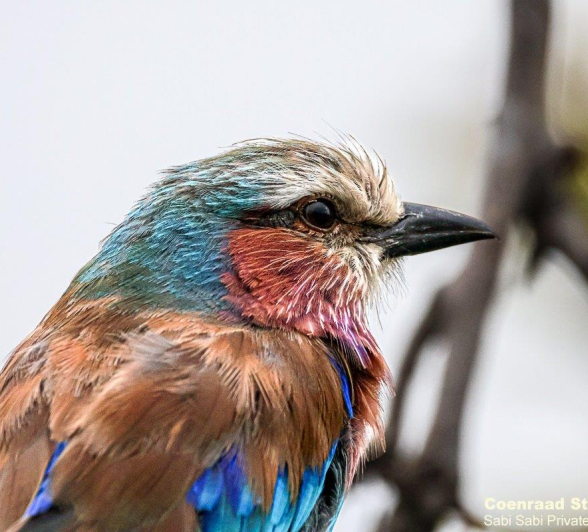
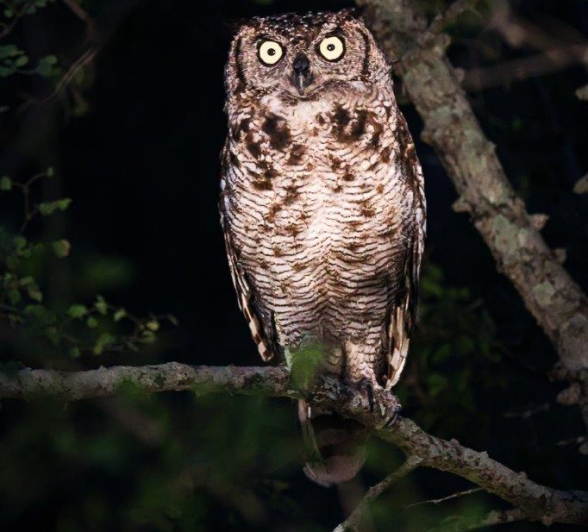
On a very rainy morning, we set out when we saw a young Blue wildebeest sprinting past us and right behind it was a big hyena. The 2 of them cut through a very thick area so we decided to move around the block seeing as they were heading towards a large open area. As we got to the open area, we saw that the hyena had successfully managed to take down the young wildebeest and that 2 others had joined in for the feast. We watched as they ate and one of them every now and then would try to run away with what was left of the carcass.
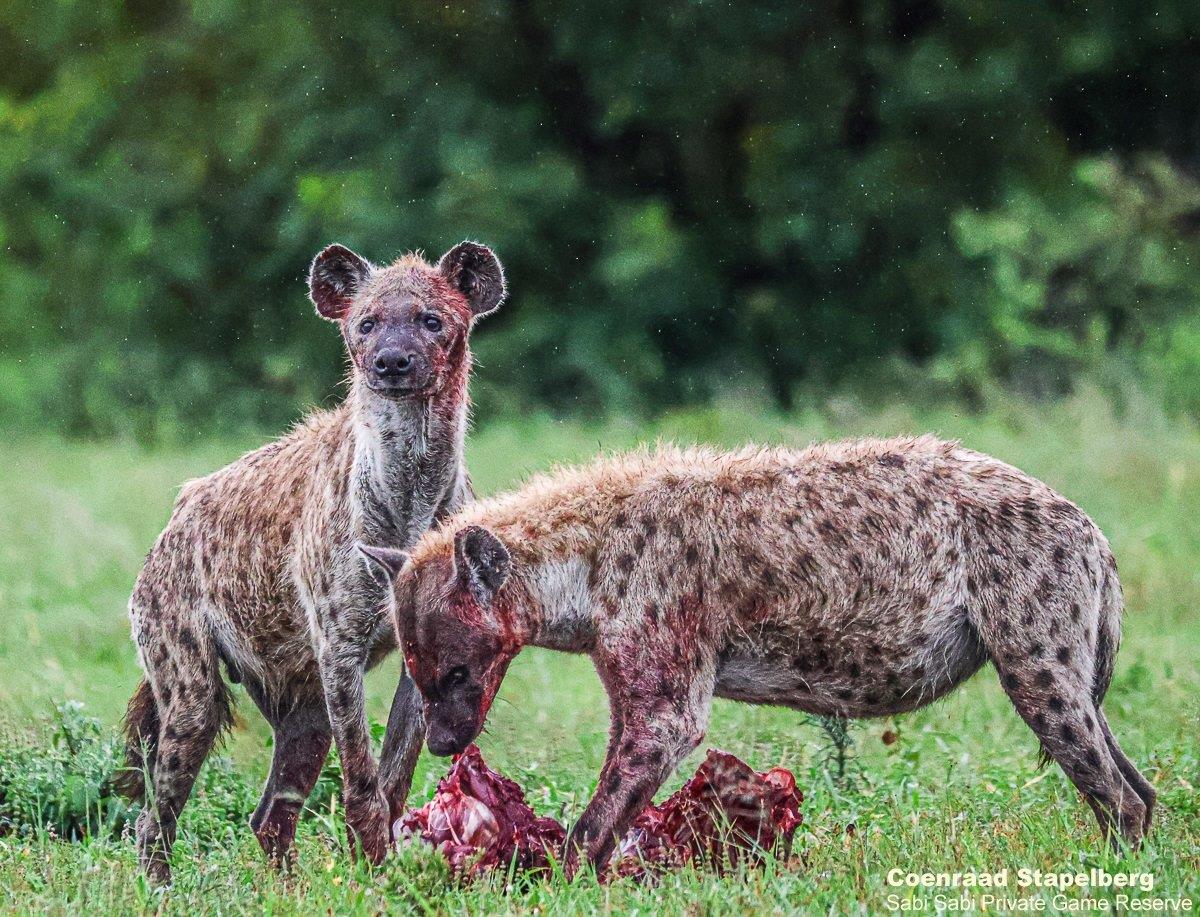
The Southern Ground Hornbill is one of the most magnificent birds you'll ever come across, with its bright red facial skin and just the sheer size of the bird. Most of the time you'll find this bird walking on the ground looking for any lizards or snakes to eat but as soon as the missive wings open up to show you the beautiful white underside, you'll be amazed to see this bird fly effortlessly.
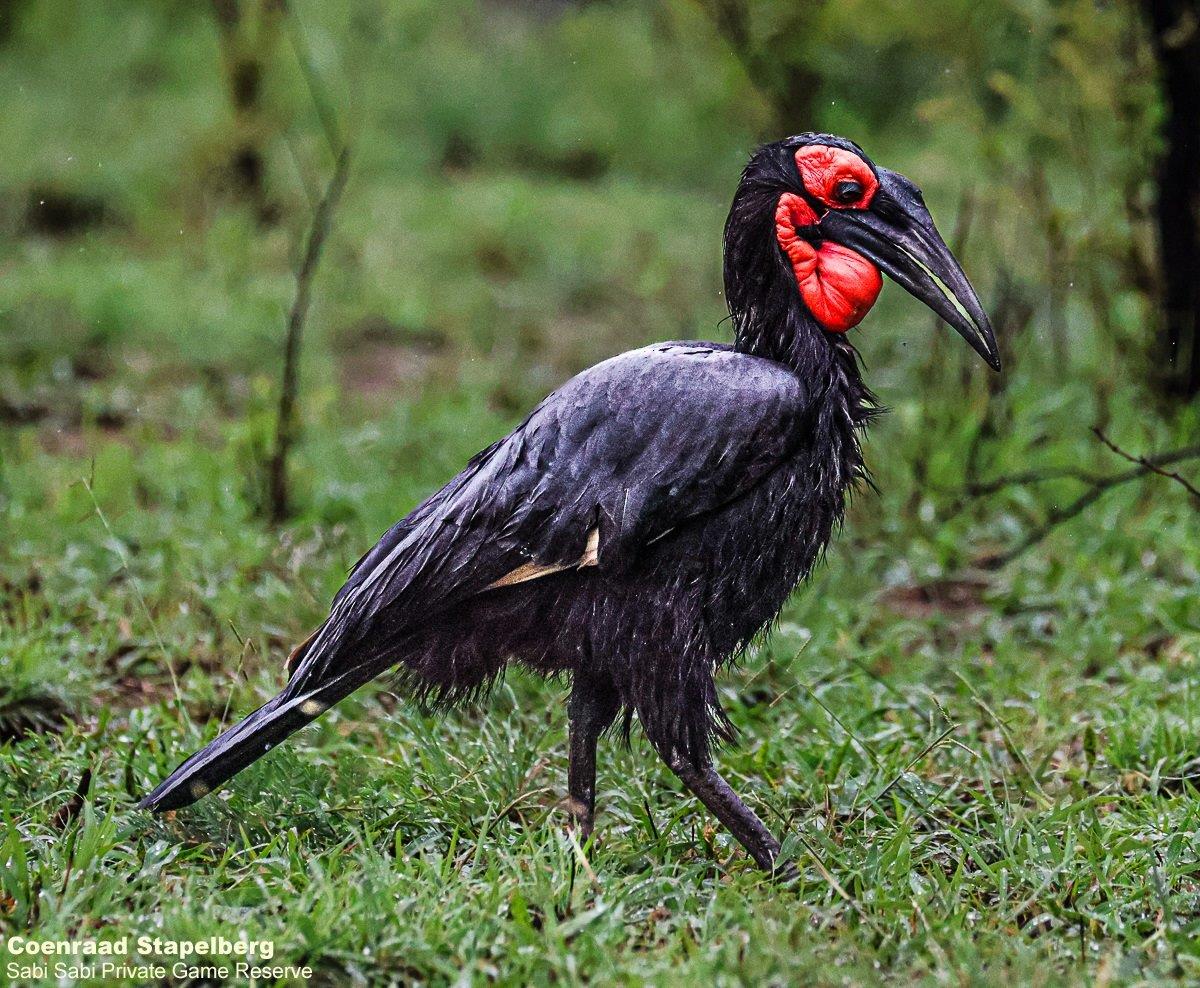
A male zebra standing guard to protect his harem while grazing with Blue wildebeest as they are so often seen together.
Male zebras are territorial and are constantly looking out for rivals or predators. It’s so often seen that zebras and wildebeest share the same feeding grounds as they prefer the same type of food and rely on each other to warn against predators. This male shows its courage as it stands out from the rest.
The iconic call of Africa around a waterhole at sunset can only bring about one bird's name. The beautiful African Fish eagle sitting in all its glory in a Knobthorn tree, looking out over a nearby waterhole waiting patiently for any signs of fish in the water.
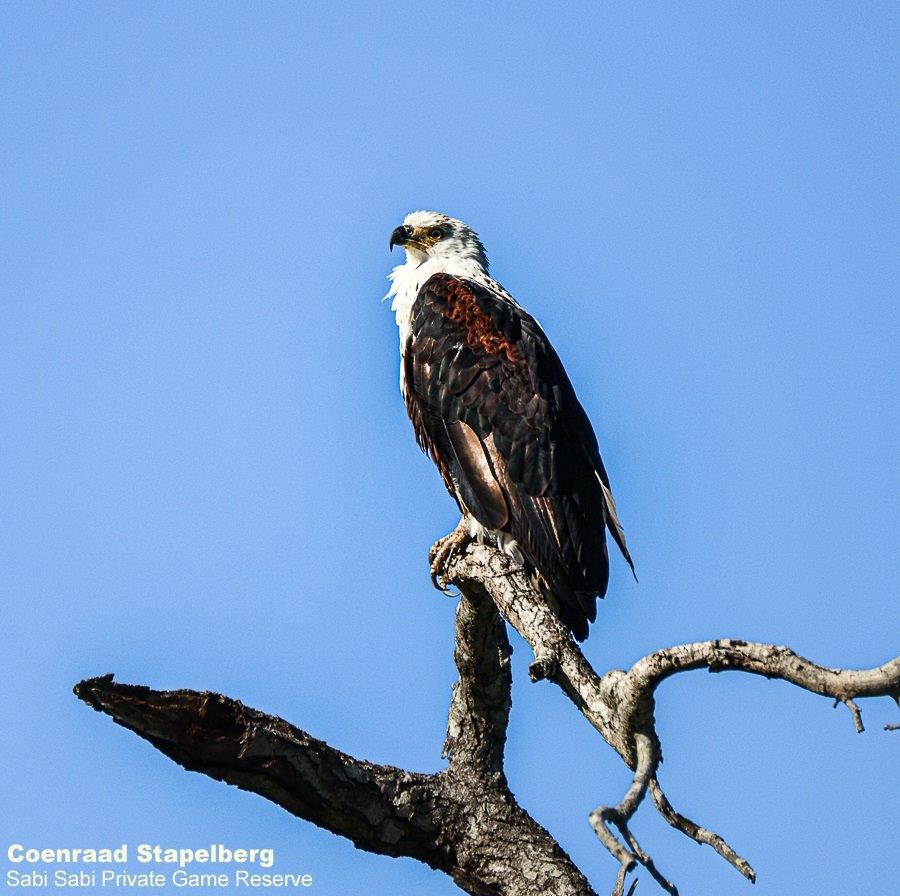
It’s the most wonderful time of the year! Lambing season is upon us and will be for a short while as lambs are born a few weeks apart from one another. There is a continual influx of babies around every corner of the reserve. These little nurseries provide some special entertainment as the “mommy heart” in most of us melts at their sweet antics!
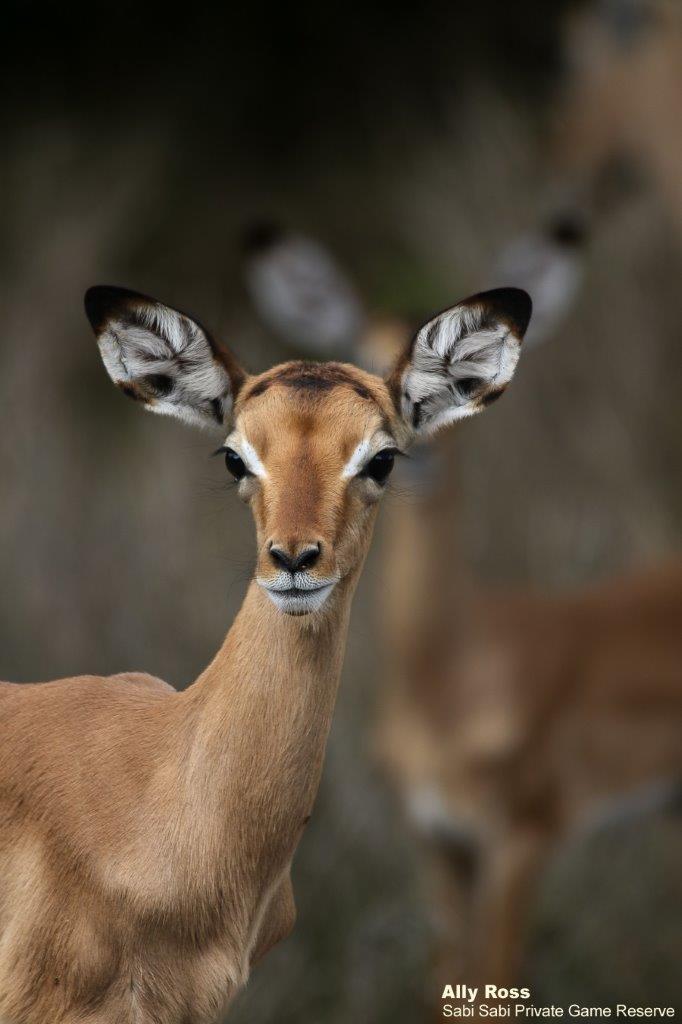
With the rains coming down and more and more life filling the bush, the Herons and Storks are all hanging around the water puddles forming out in the bush.
This Grey Heron was lucky enough to find a frog for breakfast and we had the opportunity to watch as the heron would shake the frog and dip it back in the water every once in a while, trying to make sure that his meal can't escape again. With one big swallow the frog was gone, and the heron carried on looking for another snack.
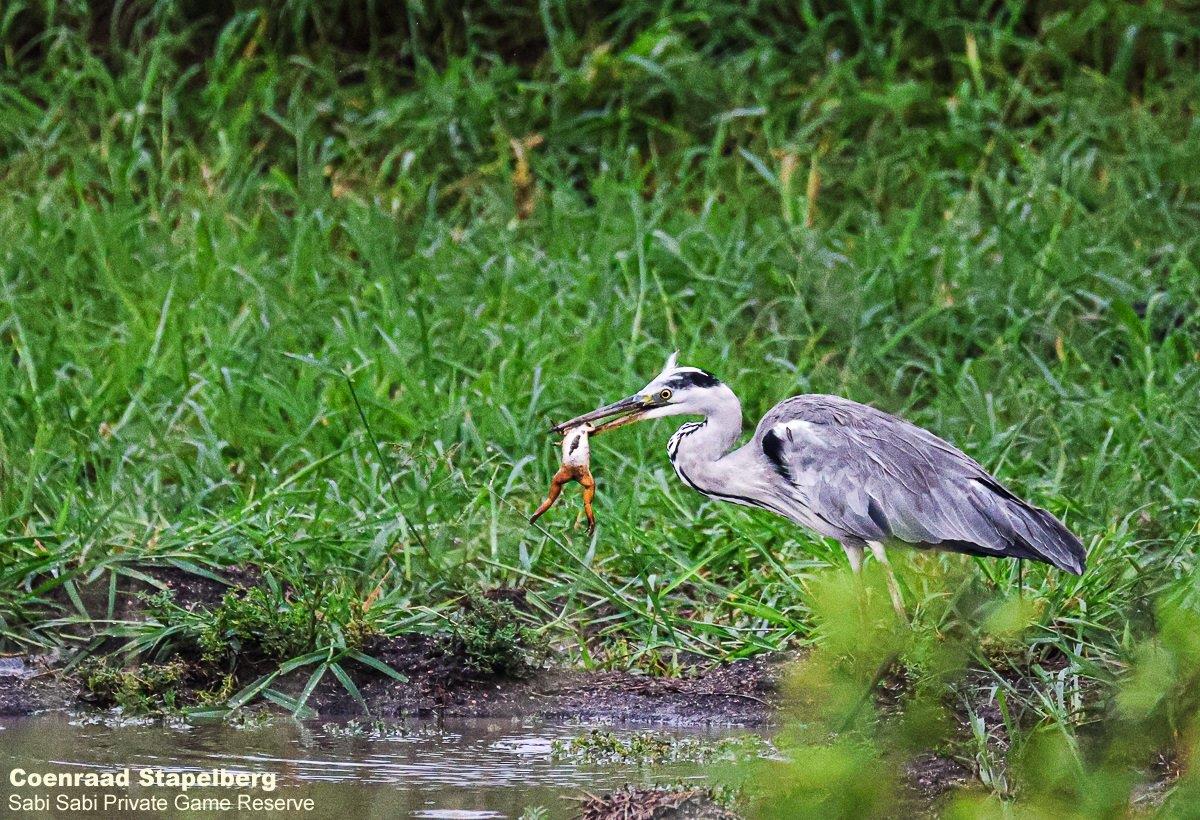
A large herd of buffalo were spotted at the pan in front of Bush Lodge. We headed straight there and found ourselves quickly surrounded by the herd as they moved past our vehicle away from the water.
One can easily be overwhelmed when faced with large numbers of animals. It is impossible to capture a scene like this on camera. We decided to break it down and look at the individual lives each buffalo currently lived. Something that caught Jason’s eye was the stark contrast between different individuals in the herd. One female was in peak condition while another seemed to be in her final stages having lived a long life with many stories to tell. Her age suggested she survived the drought of 2015/2016, scars on her rump show she won many battles with lion, and one horn missing must have an incredible story behind it. Our battle with time, like this cow, is inevitable but what is important is to create memories along the way.
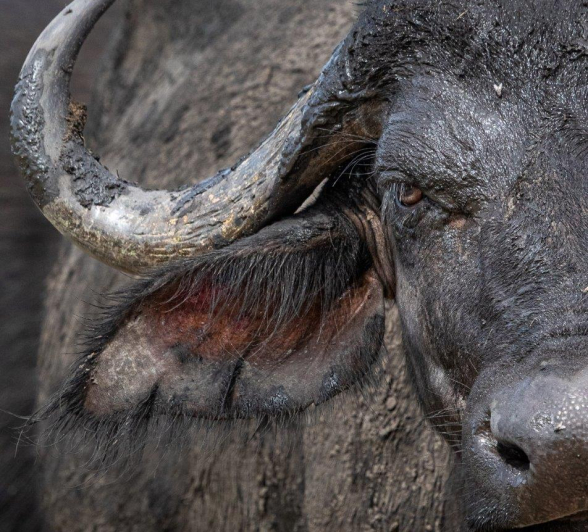
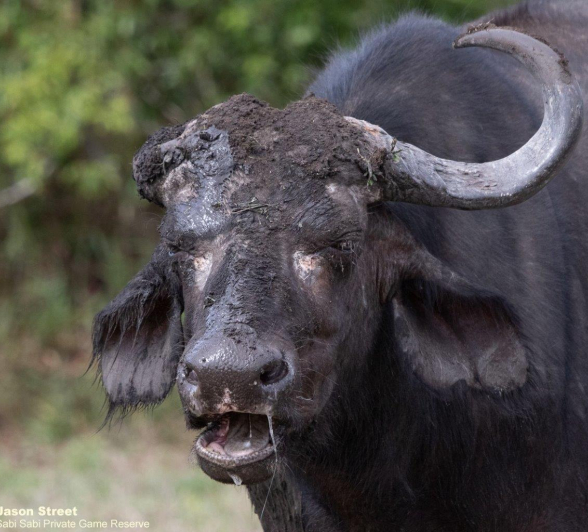
The Fork-tailed Drongo will often associate with foraging herbivores, following them, and waiting in nearby trees, darting down to catch insects as they are disturbed by the larger herbivores. Here a Fork-tailed Drongo was doing just that, trailing a large herd of elephants, and cashing in as insects flew from around the moving feet of the elephants.
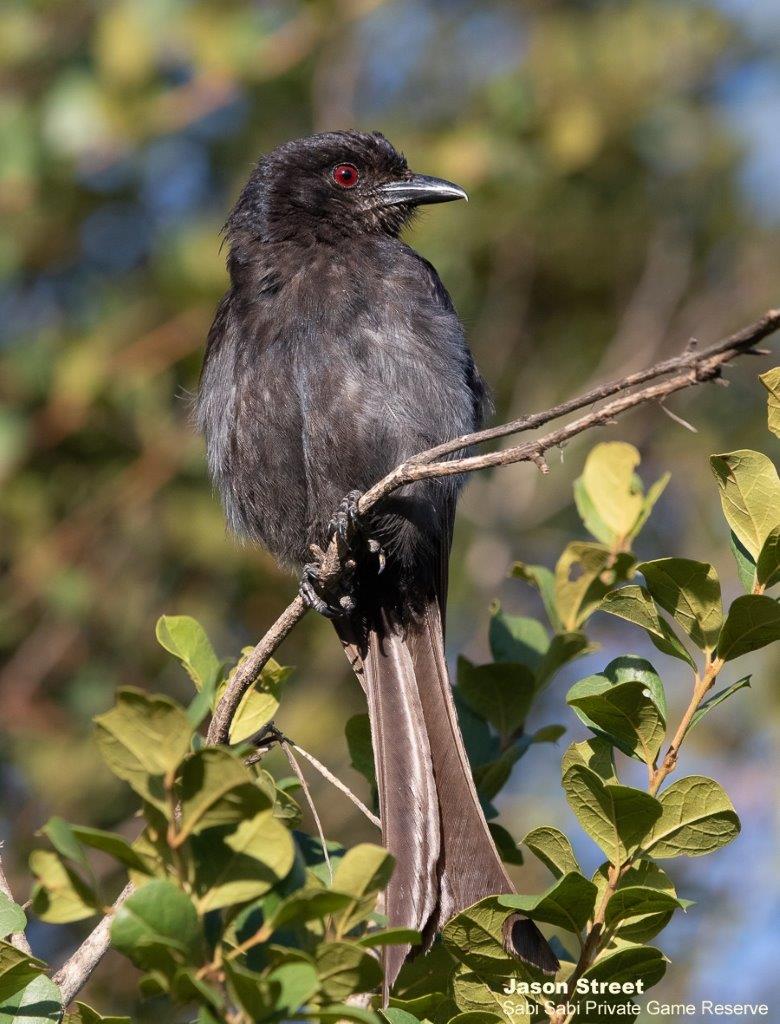
We set out and made our way to the western sector of the reserve to see if we could find the Talamati Pride that had been hanging around in the area for quite some time.
We found them lying on the road and trying to stalk some impalas but due to the lack of cover they were quickly spotted, and the impalas made a run for it. Just like that all the pride members fell over and faded off to sleep with the one young female giving us a couple of big yawns before joining the rest.
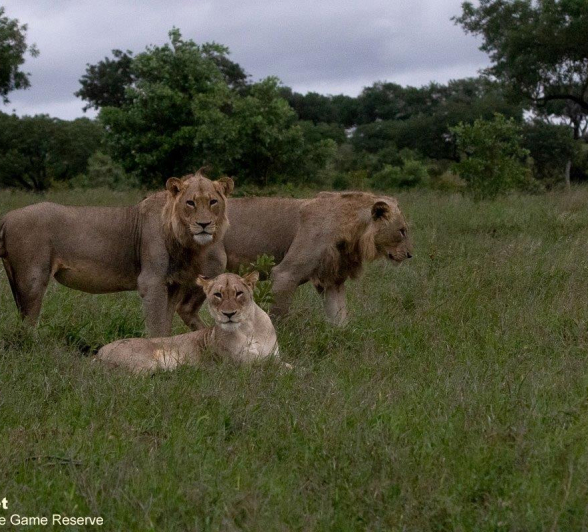

The Styx Pride have kept a very low profile trying to avoid other lions at all costs. There is a lot of pressure from other lions in the area now with the Southern Pride and Gijima males to the South, Talamati Pride to the west/central and the Kambula Pride and N’waswishaka males to the North and East. What will happen and where will they settle? Only time will tell.
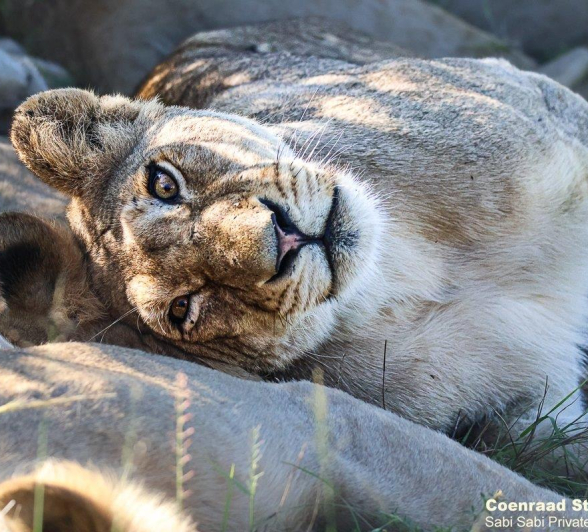
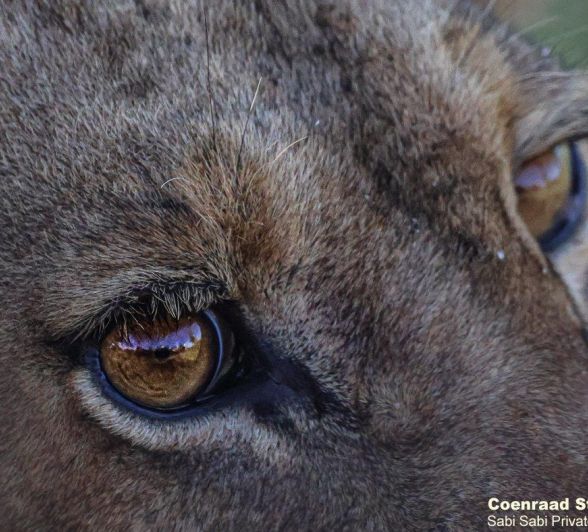
Often a dead giveaway when searching for leopards is the conspicuous white under the tail. On this occasion Ntsumi was slinking through a dark Tamboti thicket and the flick of this white tip alerted us to her presence. She continued and was on a mission to find a meal.
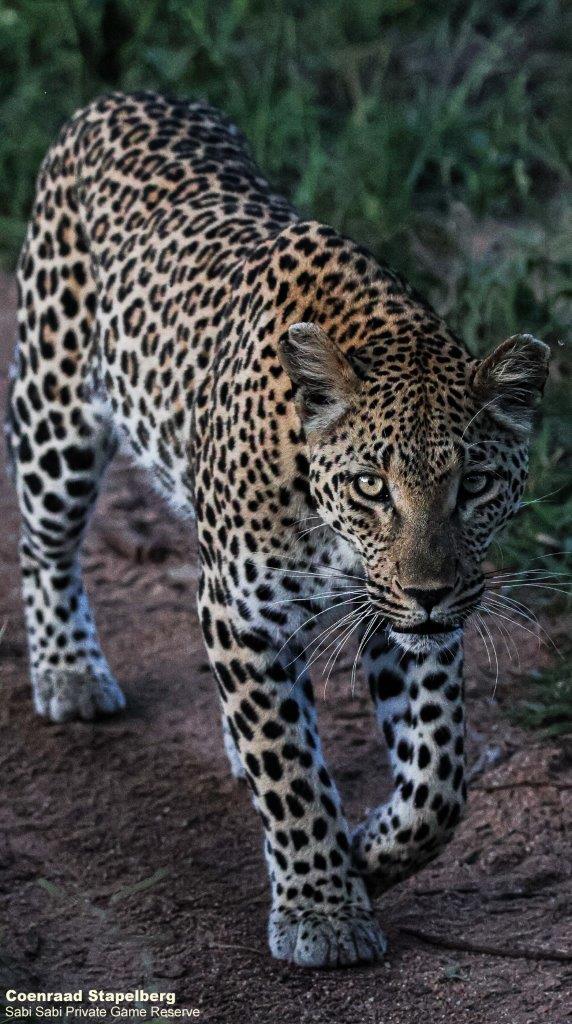
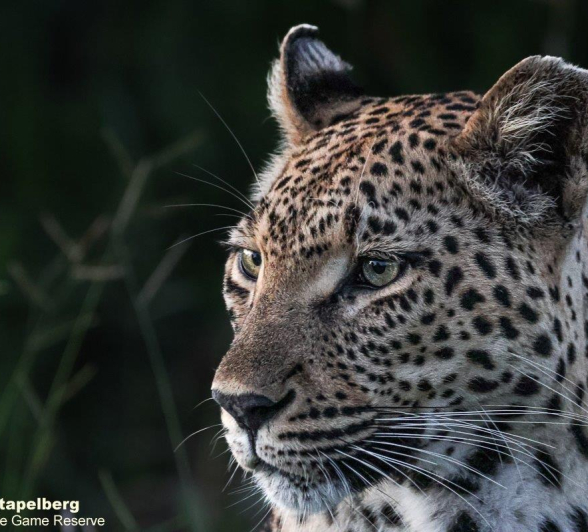
Ntsumi’s cub is getting bigger by the week, and soon he will be bigger than his mom. We are starting to find him more by himself, but being only 10 months old now, he is still very dependent on Ntsumi. At this age, he can hunt small prey like scrub hares, mongoose, birds, and even young impala. Leopard cubs will normally be fully independent of their moms by the age of 2 years old, and during this time when they are still dependent on their moms, they will learn how to hunt and survive them. This period of 2 years is crucial for them.
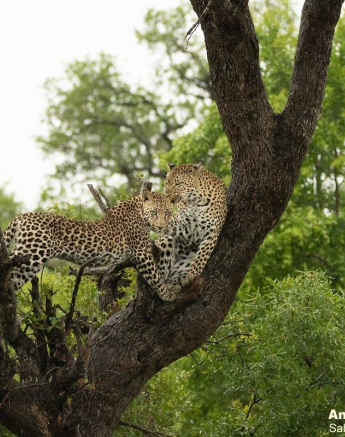

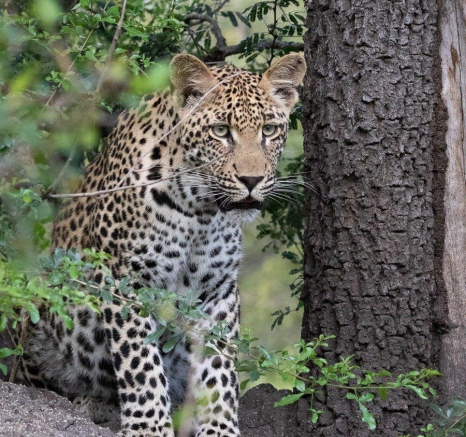
Late one morning, Ntsumi managed to kill a young impala lamb. She stashed the impala in a tree and quickly disappeared off to collect her cub. She then left her cub with the kill. The following morning, they were seen together again before she headed off in search of another meal. Her cub stayed behind and practised his stalking skills on a warthog. He was unsuccessful and found comfort in some shade on a very warm morning.
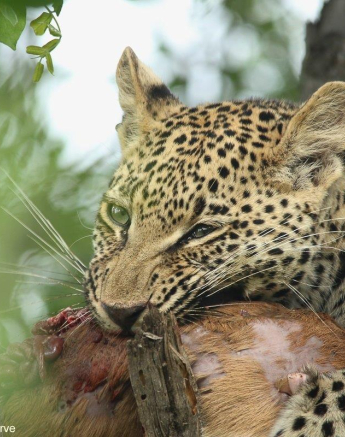
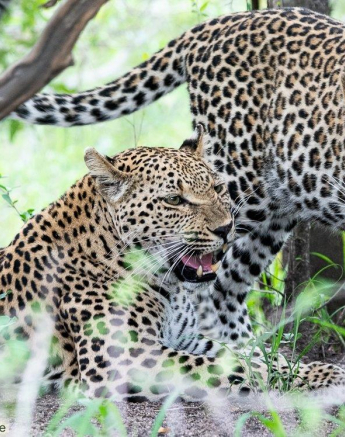
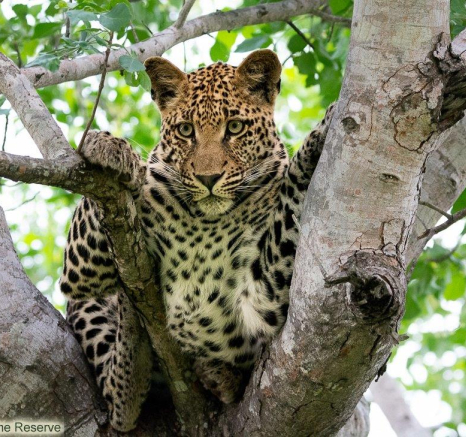
The well-known and loved Kigelia female leopard was resting in a Marula tree. We caught sight of her from a distance, but as we approached, she gracefully, as leopards do, descended from the large tree and made her way to rest on top of a termite mound instead. As she strolled past the vehicle, we noticed that her belly was round, plump really, we have a feeling this female may be carrying cubs; if we are right, in previous experience, she has often used this far western sector of the reserve to den. Only time will tell, but her graceful nature sure is giving us all the right feelings this new year!

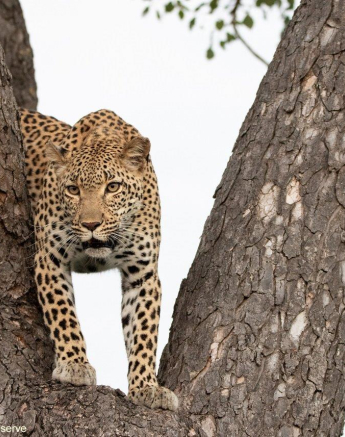
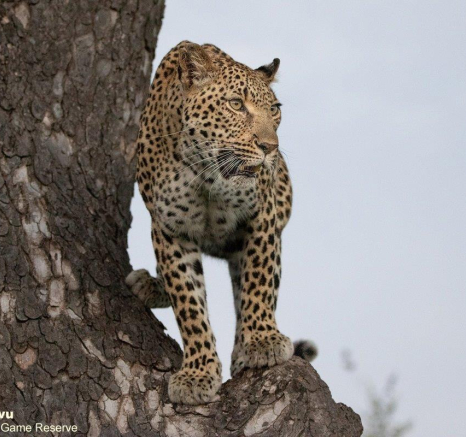
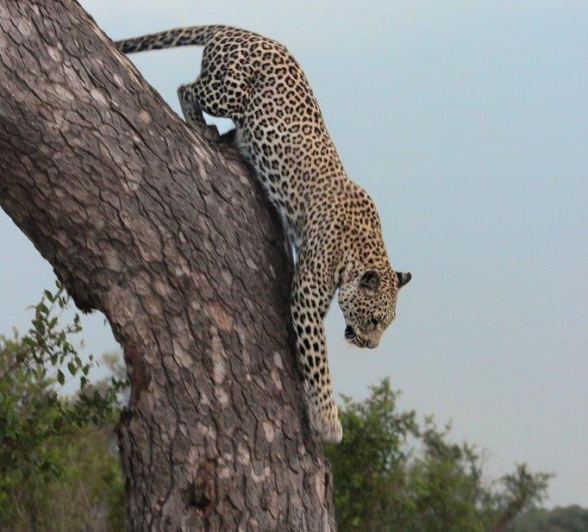
It was just her dappled coat that caught our eye as we moved through the dense bushes; elusive as they should be. We navigated our way through some tough terrain to finally spot Golonyi resting on a large boulder. For a moment we got to watch her as she scanned the open plains below her. She considered heading down but chose to soak up the morning light for a little while longer just out of sight. Patience paid off as she eventually caught sight of a squirrel and attempted to chase it around the rock, although maturing into an independent, successful leopardess, she is still youthful at heart. She seemed somewhat entertained by her own antics.
She made her way down the large rock to a smaller set where she proudly stood in all her glory; delighted we ourselves soaked up the moment in awe of her coat glistening in the morning light. Walking along the roadside she came across the nest of a Southern Foam Nest Frog and simply could not help herself, she proceeded to paw at it and break it apart until she lost interest. She made her way past the vehicle and sought refuge in a large tree, taking advantage of the shade and the vantage point she now has as she seeks potential prey.
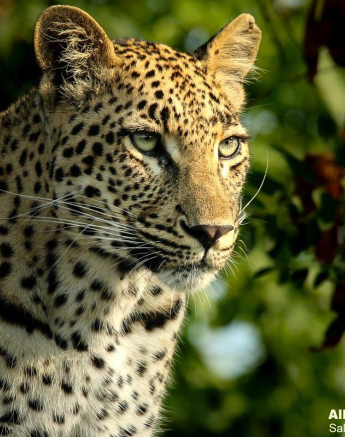
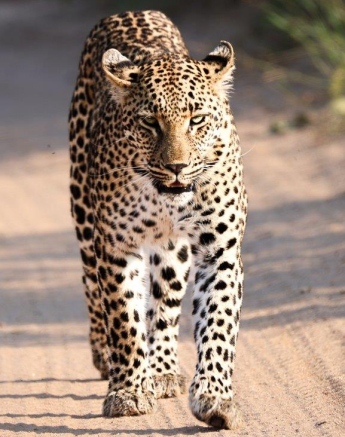

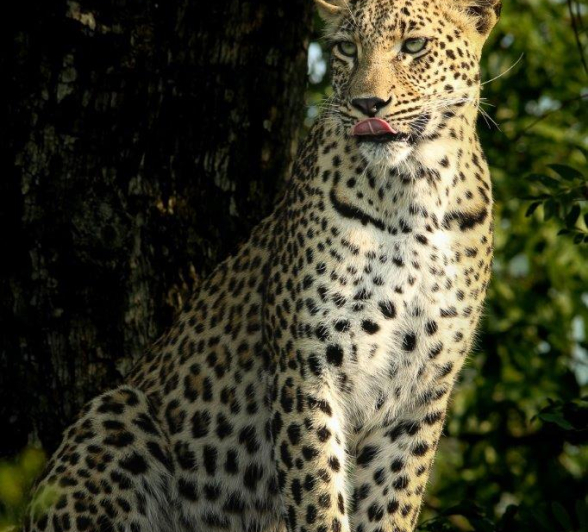
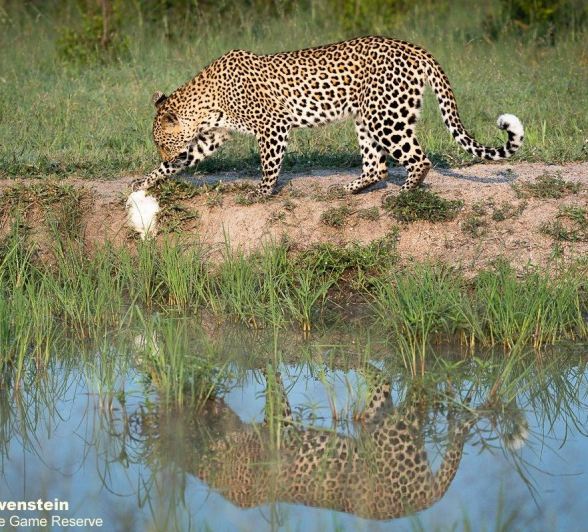
The Tengile female leopard has been seen regularly on the eastern parts of our reserve, marking territory heavily. Between marking territory, she was hopping from trees to termite mounds trying to see if there was any prey around.
Like male leopards, female leopards are also territorial, and they do scent mark their territories as well, normally after big rains like we had a few days ago their scent gets washed away by the rain and they need to remark.
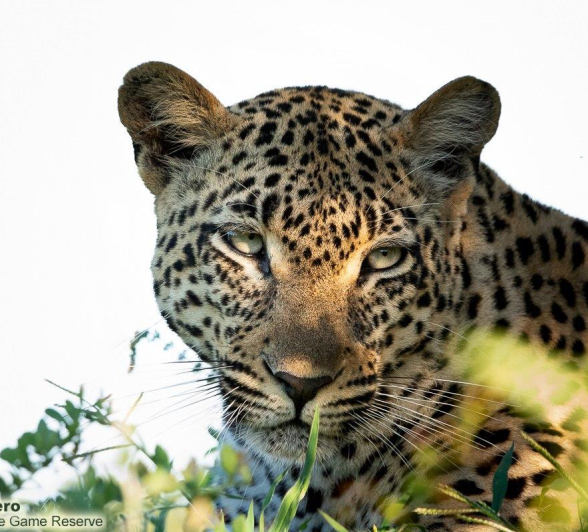
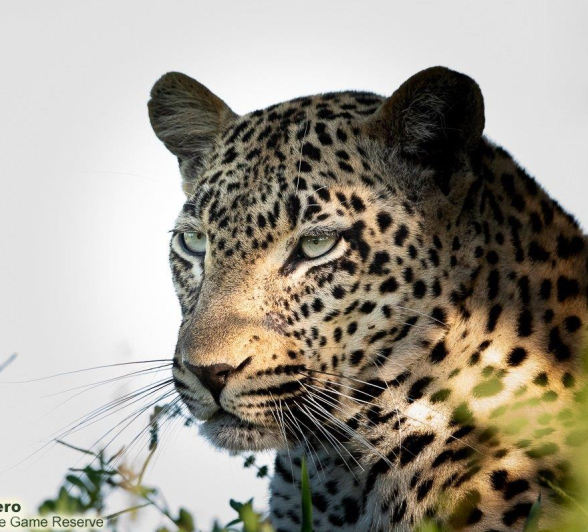
Ending a spectacular week with a rare sighting...
Darkness set in and one of the secretive cats of the night, a Serval, showed itself. Servals are mostly nocturnal and solitary. They specialise in hunting small rodents in thick grass where they use their large ears to locate prey.
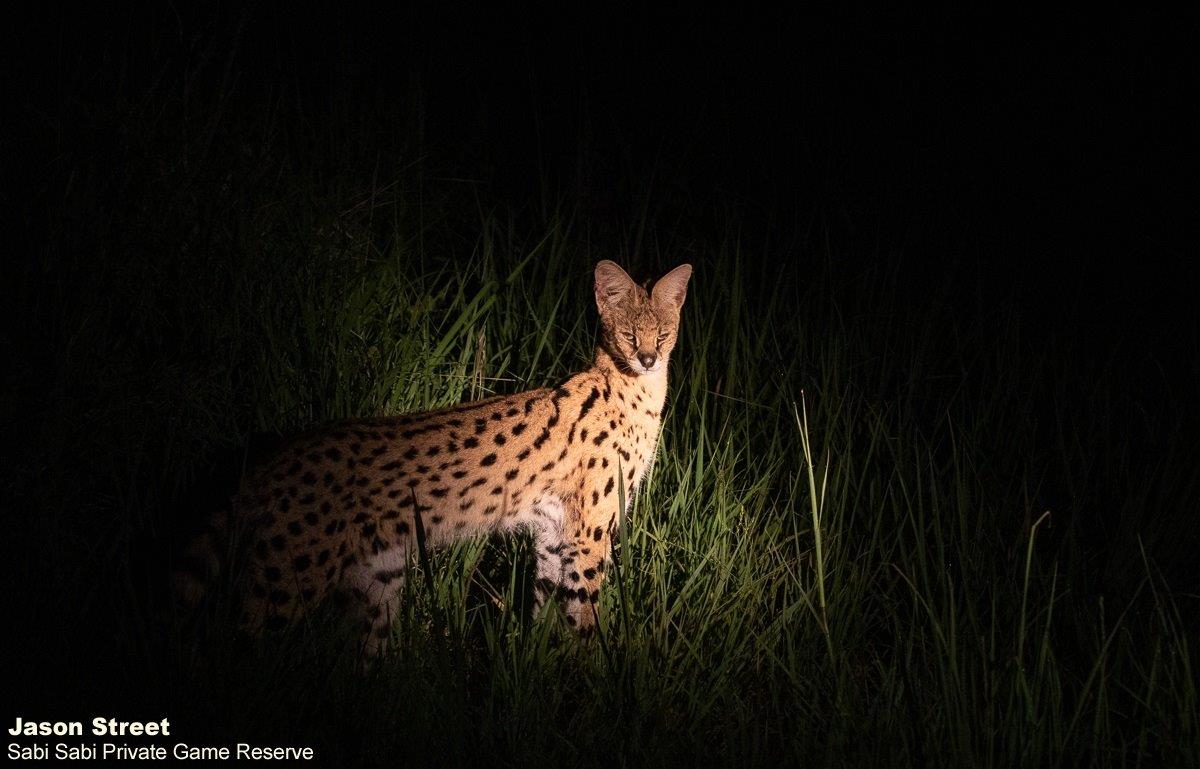
Until next time






